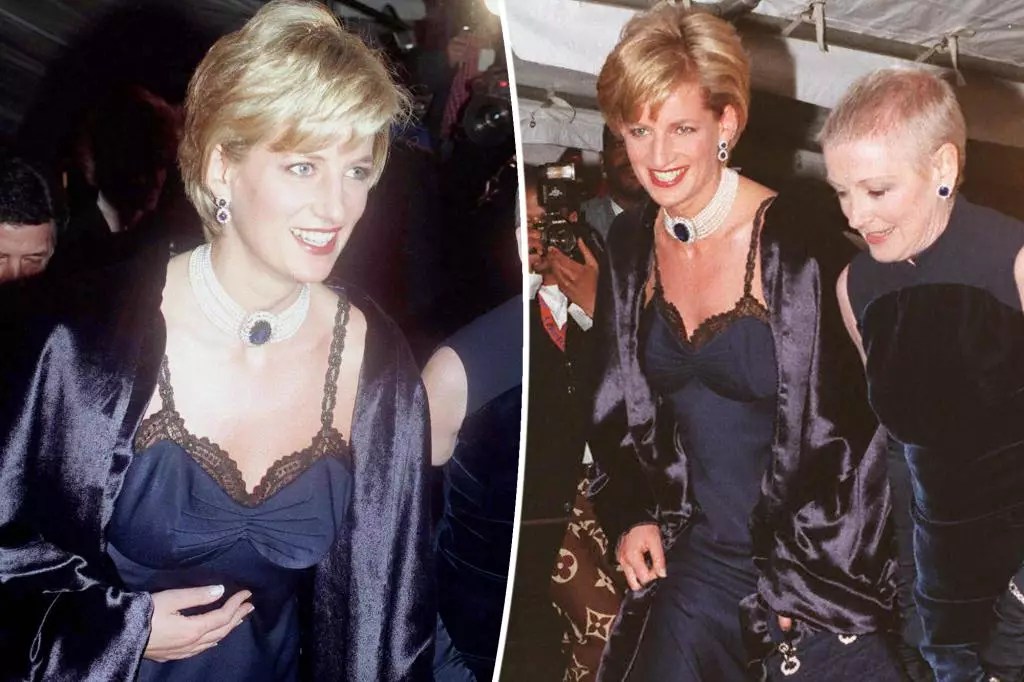In 1996, the illustrious Met Gala journeyed into the annals of fashion history as Princess Diana made her stunning debut on the prestigious red carpet. It was an event laden with symbolism, especially given that it occurred shortly after her divorce from Prince Charles. The theme of the gala paid homage to Christian Dior — a fitting tribute to one of fashion’s greatest innovators, just as Diana herself had become an icon in her own right. With the eyes of the world on her, she transformed the event into a moment of personal expression that transcended the conventional norms of royal attire.
At the center of this monumental event was designer John Galliano, who had the privilege of dressing the Princess of Wales. Galliano, known for his flamboyant and avant-garde designs, welcomed the opportunity to work with Diana, who, despite her royal background, brought her own fervent ideas to the collaboration. In a recent Hulu docuseries titled “In Vogue: The 90s,” Galliano shared the charming details of their initial meetings and the creative atmosphere that pulsated between them.
“I remember arriving in this old van, which felt like an adventure,” Galliano recounted. Such vivid imagery captures the spirit of a budding partnership where mutual respect and artistic vision flourished. Diana’s genuine interest in fashion, coupled with Galliano’s expertise, laid the groundwork for a creation that was uniquely hers.
What set Diana’s Met Gala gown apart was not just its exquisite construction but the way it reflected her sense of self. Galliano faced an intriguing challenge in designing the dress; despite his inclination to use pink fabric, Diana insisted on a navy slip dress complemented by delicate black lace. This choice epitomized her ability to harness her agency and challenge the expected, opting for a design that spoke to her inner spirit rather than the pressures of royal convention.
Yet the most significant alteration wasn’t merely a change of color or fabric; it was the ultimate act of self-expression: Diana removed the corset from the dress on the eve of the gala. Galliano’s reaction was one of awe as he witnessed the transformation. “She felt liberated. The dress’s sensuousness became apparent,” he noted, highlighting the juxtaposition between the rigidity often associated with royal attire and Diana’s newfound freedom.
The gown was not the sole highlight of Princess Diana’s outfit. She completed her empowering look with a breathtaking pearl-and-sapphire choker and a quilted blue satin bag, which would eventually be immortalized as the “Lady Dior” in her honor. These accessories not only complemented the dress but also embodied a sense of sophistication and grace that Diana was renowned for. Her choice to wear a matching satin robe upon entering the venue added an air of drama, further marking her presence on that significant night.
As the evening unfolded, and Diana walked alongside Liz Tilberis—former editor of Harper’s Bazaar—it became evident how transcendent this moment was for the Princess. It was an exhibition of personal style and poise, a sharp contrast to her previous public personas. In the docuseries, Anna Wintour reflected on the event, stating, “Diana was the most famous woman in the world.” Her ability to embrace fashion while simultaneously retaining her prominence in the spotlight solidified her status as an unwavering beacon of elegance within the public consciousness.
Unfortunately, this remarkable chapter of Diana’s life was tragically brief. Less than a year later, she died in a car crash, leaving behind a legacy that extended far beyond the realm of fashion. Her appearance at the Met Gala will forever remain imprinted in the hearts of fashion enthusiasts and admirers of her enchanting spirit, a reminder of how one night can encapsulate personal liberation amid societal expectations. In the world of glamour and poise, Princess Diana’s legacy shines brightly, proving that true elegance comes from authenticity and the courage to express oneself boldly.







Leave a Reply